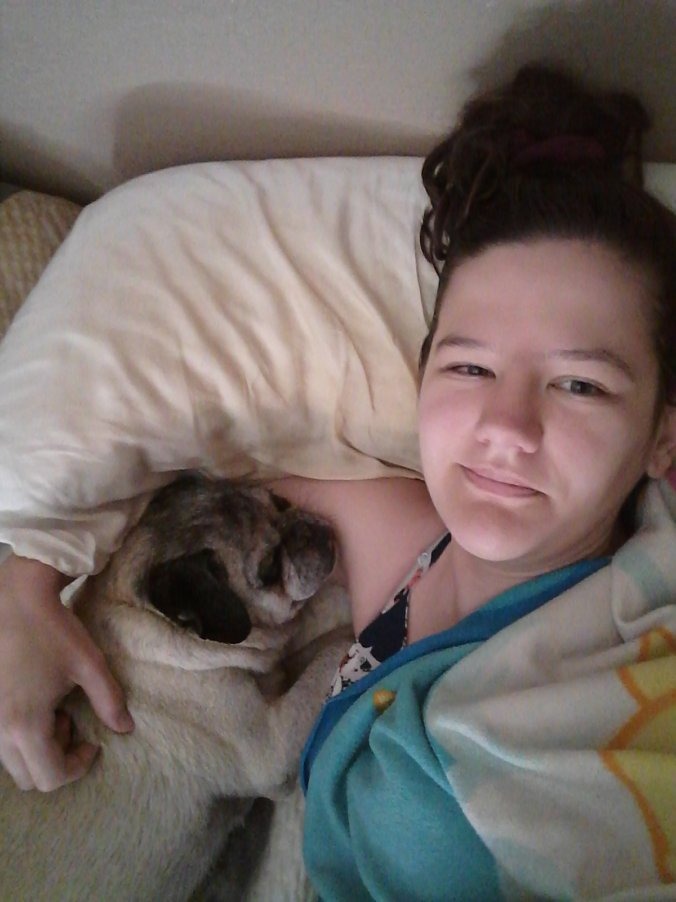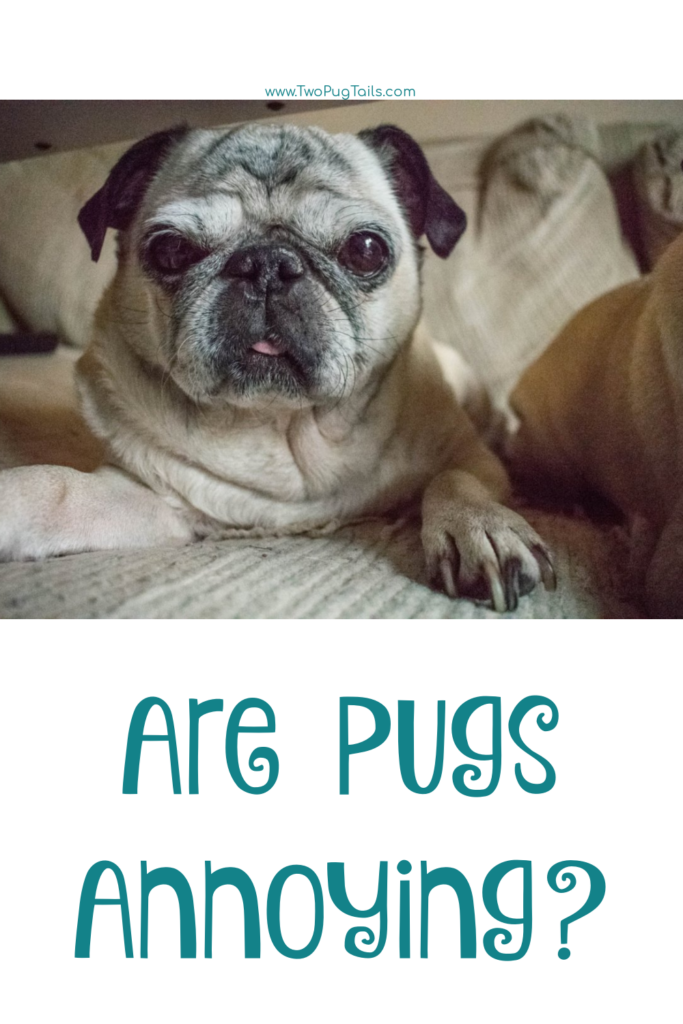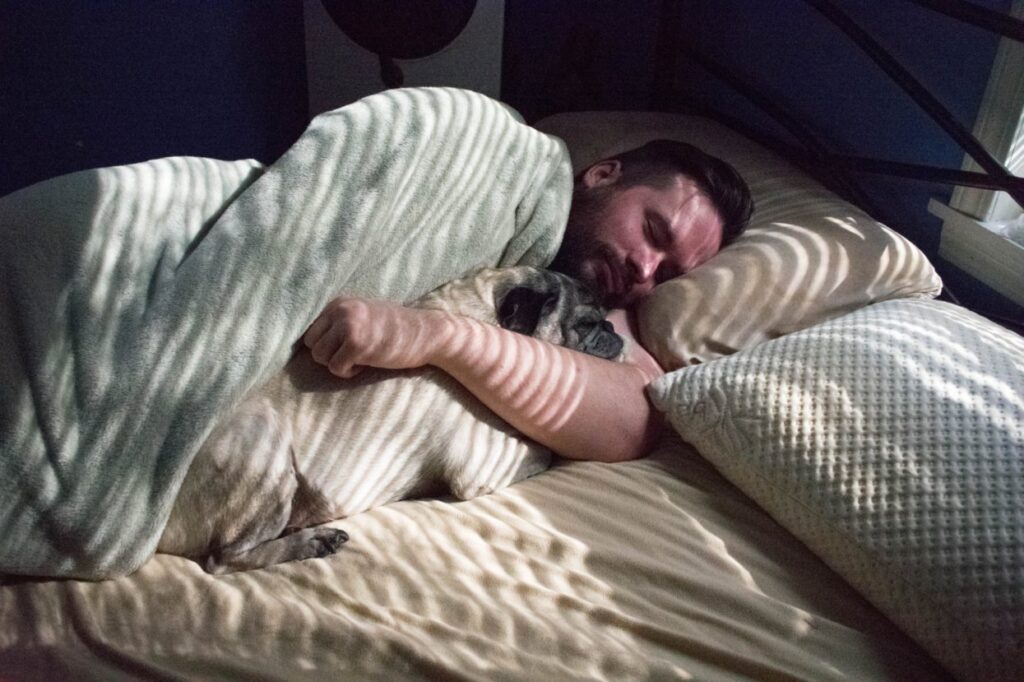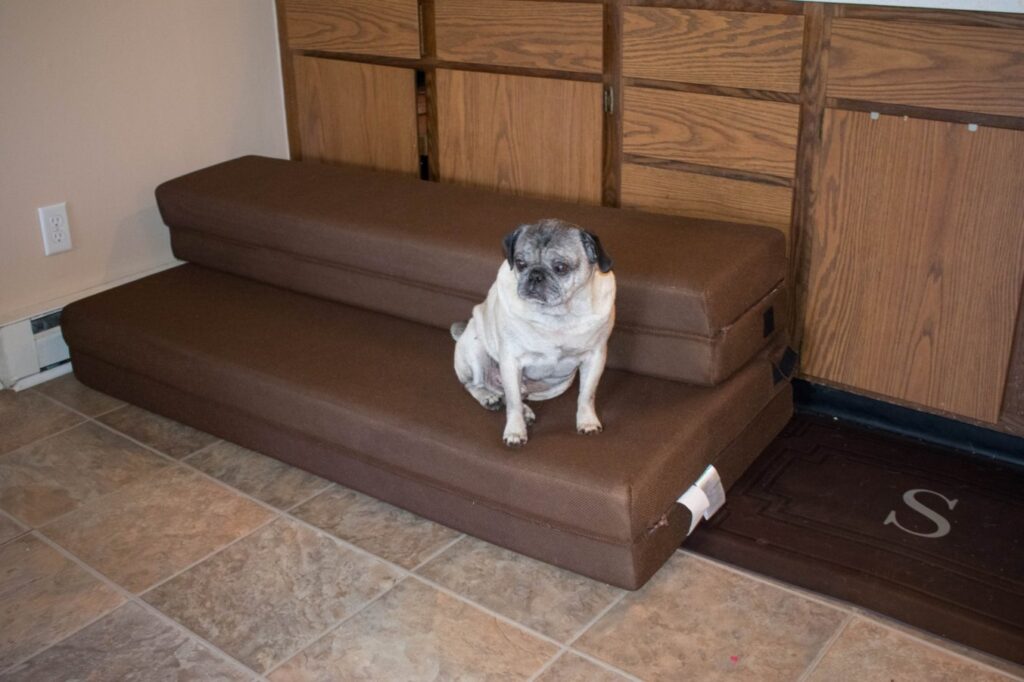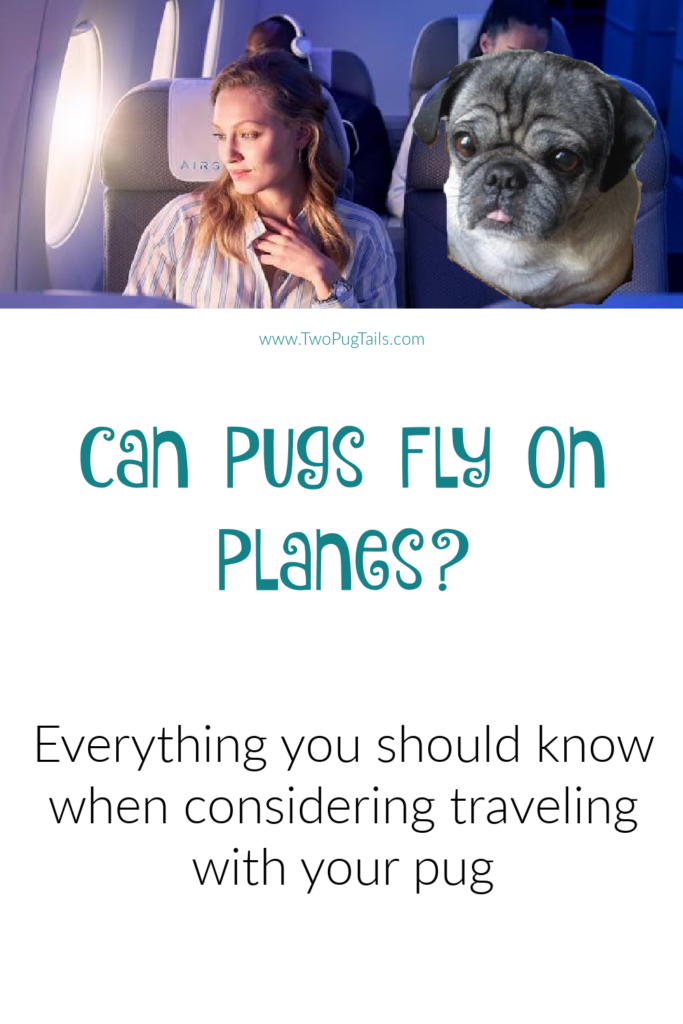Pug Breathing Problems Explained
Pugs are prone to breathing issues due to their unique facial structure. Shortened airways combined with soft tissue obstruction makes smooth, quiet breathing impossible for many pugs. Read on to learn about common pug respiratory conditions, evaluating breathing troubles, and steps you can take to support your pug’s airways.
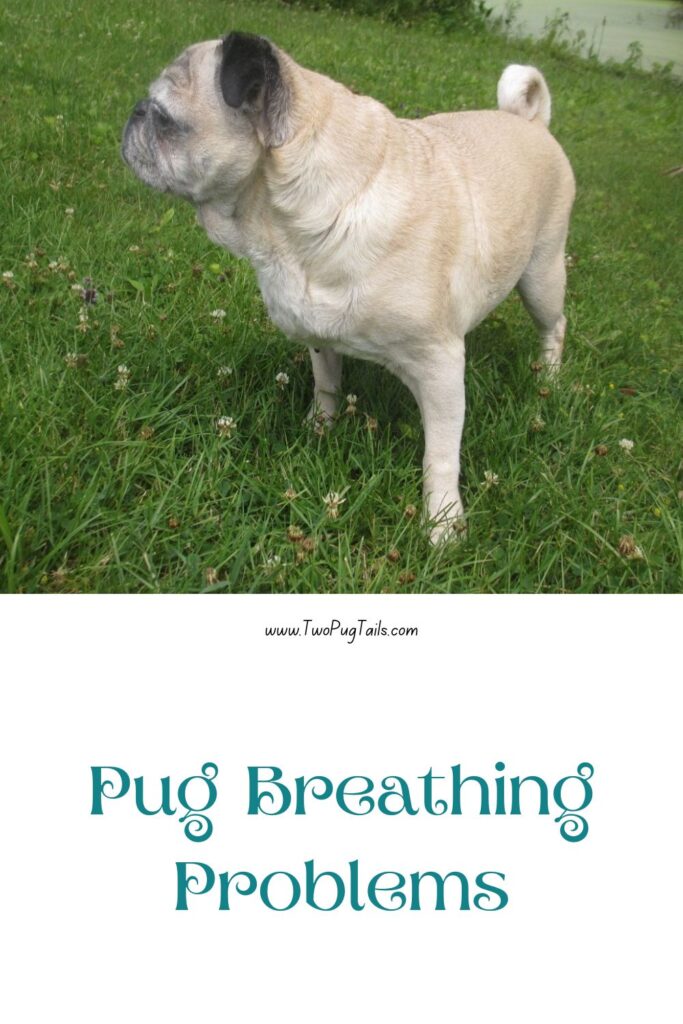
Do all pugs struggle to breathe?
Breathing difficulties affect most pugs to some degree due to their brachycephalic (short-muzzled) anatomy. But some pugs have more severe obstruction than others. Careful selection for longer snouts and nostrils can reduce breathing impediments. Still, elements like narrowed tracheas and tendency for collapse mean all pugs will experience some shortness of breath, especially with exercise. Focus on choosing reputably bred pugs and managing conditions proactively.
A Personal Note
I had two pugs, Frank and Beans. Frank had a slightly longer nose than Beans, and he had very few breathing problems. He was able to hang out outside when it was 80 degrees and not pant unless he was also being active. He had to play for a long time before he would pant at all. Beans panted very easily. If she was excited, if she had gone on a very short walk, if we played for almost any time at all – she’d be panting. She also would pant anytime it got above about 75 degrees. We had to use the air conditioning to keep her comfortable before us humans cared to have it on.
Beans had a collapsing trachea, which was part of her breathing issues as well.
When choosing a pug in the future, my hope is to choose one that was bred for health purposes, and that has a longer snout. For Frank and Beans, the small difference in the length of their noses seemed to make a very significant difference.
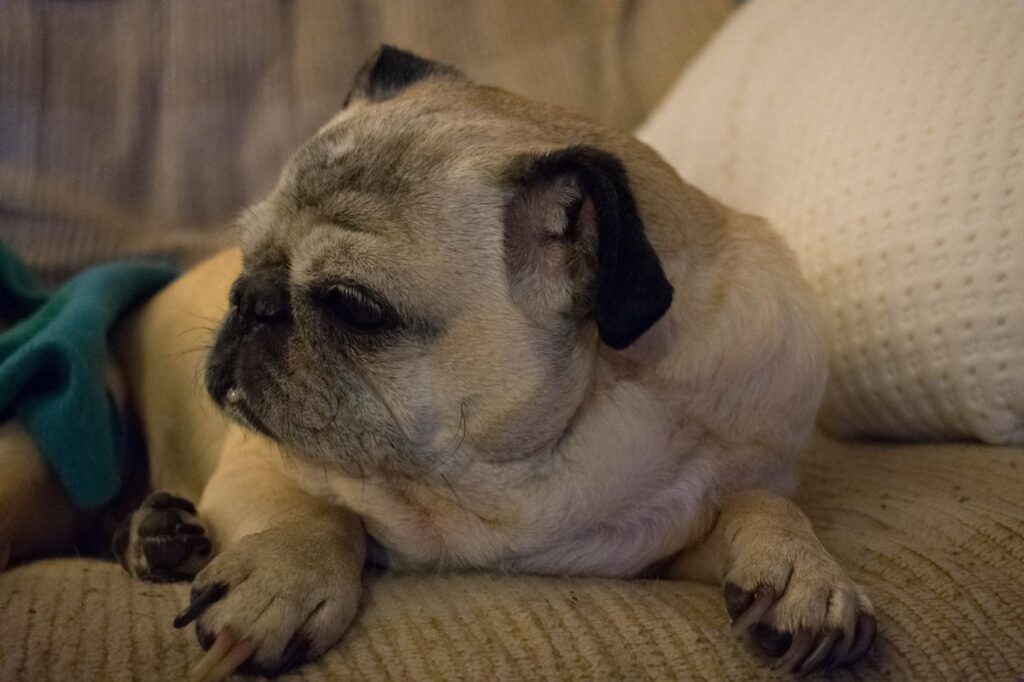
Do pugs have to breathe through their mouths only or can they breathe through their nose?
Pugs can breathe through both their nose and mouth. But stenotic nares (pinched nostrils) and elongated soft palates often obstruct normal nasal airflow. This forces them to rely more on open-mouth breathing for sufficient oxygen, especially with any activity. Some pugs undergo nose surgery to open constricted nostrils which can allow more nasal breathing. But mouth breathing will always play a role due to structural limitations.
How can I select a pug puppy that is less likely to have breathing problems?
Select a breeder who screens breeding dogs for longer snouts, wider nostrils, and moderate soft palate length. Meet parents to observe breathing, activity tolerance and conformation. Choose the most energetic, athletic puppy with more open nostrils than littermates. Well-bred pugs from health-focused lines will still have some breathing impairment, but should avoid extreme obstruction.
Should all pugs get surgery to improve their breathing?
Surgery can benefit many pugs, but is not essential for all individuals. Mildly affected pugs may breathe noisily but have no exercise intolerance or distress. Severely affected dogs risk overheating and life-threatening crises without surgery. Assess your pug’s quality of life. If they struggle for breath performing normal activities, become overheated easily, or have collapsing trachea attacks, surgery may significantly improve comfort. Consult with both your general vet and a board-certified surgeon.
What can I do to reduce the odds of my pug developing breathing issues?
Pick a quality breeder focused on health. Maintain lean body weight – extra pounds aggravate breathing struggles. Exercise carefully in cool weather only. Use a harness, not collar. Monitor for any infection signs and treat immediately. Humidify air to reduce irritants. Avoid environments with smoke, pollen, or dust. Discuss allergy management with your vet. Address early signs of collapsing trachea aggressively.
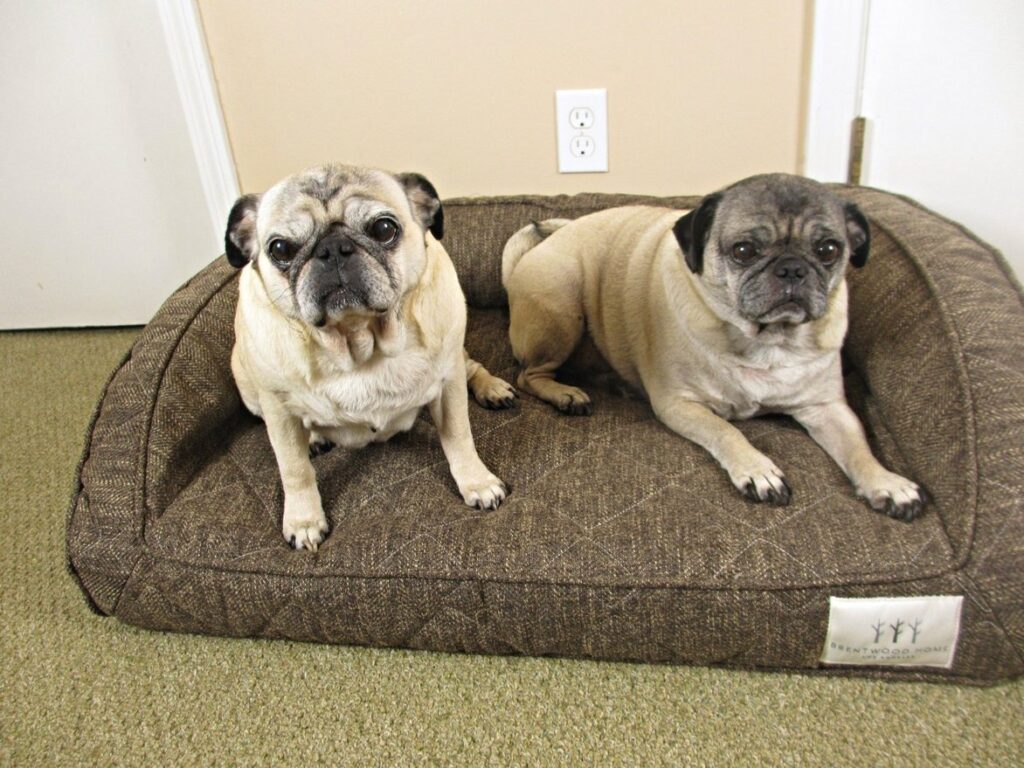
My pug shivers while breathing in (inhaling) – why might this be?
Shivering or trembling while inhaling is often a sign of air hunger and struggling for sufficient breath. Partial airway obstruction from stenotic nares forces pugs to work harder to inhale. The whole body effort to pull in air against resistance causes visible shaking. This symptom warrants an exam to determine if surgical nostril widening might help normalize air intake.
Why does my pug breath fast while sleeping?
Increased respiratory rate while resting signals medically concerning respiratory impairment. Even while relaxed and sleeping, pugs with narrowed airways must pant faster to achieve oxygen exchange. Other potential explanations include pain, fever, heart issues, or collapsing trachea episodes. Schedule a vet visit to examine your pug and potentially obtain x-rays of the chest.
Why is my pug taking short breaths?
Rapid, shallow breathing is another compensatory mechanism when airways are obstructed. Pugs take quicker, smaller breaths to get some air exchange despite restrictions. While common in the breed, alert your vet to sudden worsening. It can indicate new illness like pneumonia, progression of collapsing trachea, or pain causing shallow breathing.
What can I do if my pug seems to stop breathing while sleeping?
Interrupted or paused breathing while resting warrants immediate emergency vet attention to assess causes like pneumonia, heart failure, seizures, or obstruction from the soft palate. Try gently rubbing your pug’s throat to stimulate breathing before rushing to the ER vet. If spells resolve fully when your pug wakes up, still consult your vet for diagnosis. But get emergency assistance if abnormal breathing persists when awake.
My pug has noisy, raspy breathing – should I be concerned?
Harsh respiratory sounds like wheezing, whistling, rasping result from airflow through narrowed passages surrounded by soft tissues. Stenotic nares, elongated soft palates, and collapsing tracheas generate these strained noises, especially on inhale. They are very common in pugs, but have your vet confirm the cause. Listen for any changes like new rattling that could indicate infection.
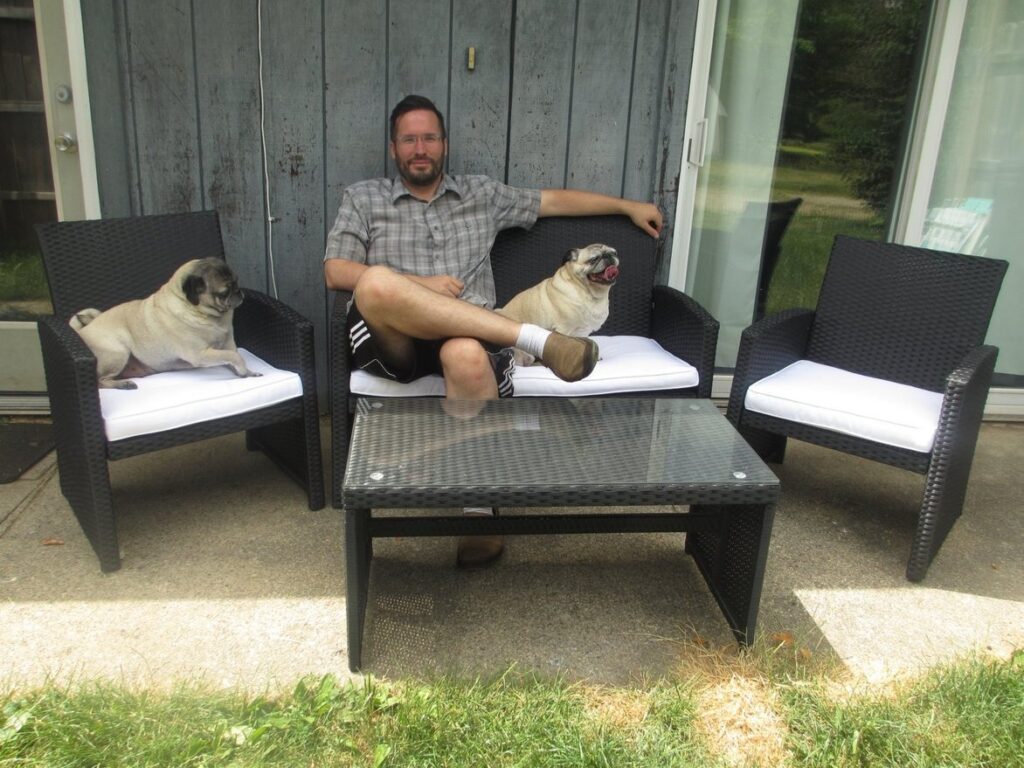
Is it okay if my pug is breathing heavily after a walk?
Heavy panting and exertion after minimal exercise is expected with pugs. Their constrained airways and poor heat dissipation make physical activity quite taxing. As long as your pug recovers promptly when rested, this reflects their physical limitations. However, if panting persists long after resting from a short walk, their breathing capacity may be severely impaired.
My pug pants constantly, should I be concerned or is this normal for pugs?
Frequent panting is unfortunately rather normal due to pugs’ chronic inability to oxygenate efficiently. Many pugs will pant after minimal exercise, if it’s hot outside, or when they are excited – but not all the time, or even most of the time. Continual panting warrants medical attention. It can signal conditions like pneumonia, heart disease, pyothorax, fever, or pain. Have your veterinarian evaluate for underlying illness causing this exacerbation.
Do pugs get apnea?
Obstructive sleep apnea resulting in paused breathing during sleep does occur in pugs. Their short muzzles and obstructed airways make resting respiration a challenge. Apneic episodes are most concerning if they occur while fully awake also. Consult a vet who may recommend surgery to open constricted nasal passages.
Can pugs have asthma?
Pugs can develop asthmatic bronchitis, especially if they have allergies or respiratory infections. Chronic inflammation narrows their already undersized airways. Treating the underlying trigger, avoiding irritants/allergens, and using inhalers helps control asthma flare-ups. Severe, acute attacks require swift emergency veterinary care.
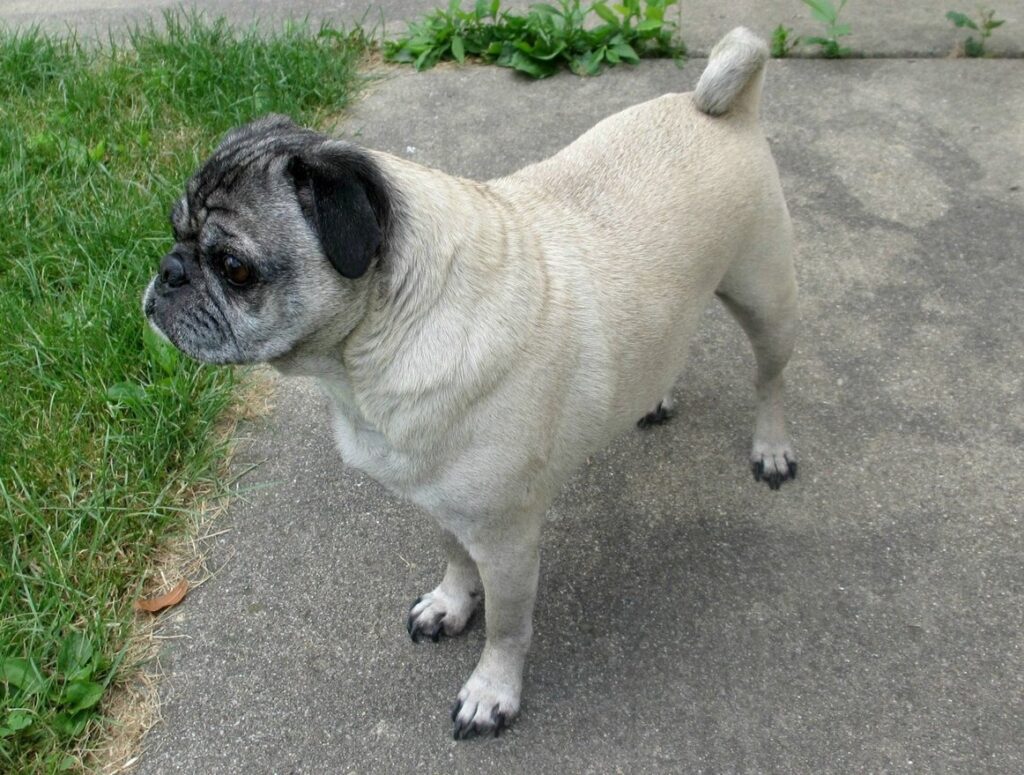
What are common pug breathing problems?
Frequent pug breathing issues include:
- Stenotic nares – Pinched nostrils
- Elongated soft palate – Excessive tissue blocking airways
- Collapsing trachea – Weak windpipe prone to closing
- Allergies and asthma – Causing airway inflammation
- Respiratory infections – Pneumonia, kennel cough, etc.
- Overheating – Causing thickened nasal tissues
Can pugs get bronchitis?
Yes, bacterial or viral infections can cause bronchitis in pugs. This airway inflammation narrows their already restricted breathing passages. Pugs with allergies may also develop asthmatic bronchitis. Symptoms include coughing, wheezing, fever, lethargy, and shortness of breath. Antibiotics, rest, humidification, and medication will treat most cases. Severe bronchitis can become life-threatening very quickly in brachycephalic pugs, so prompt veterinary treatment is key.
What are stenotic nares?
Stenotic nares refers to abnormally narrowed or pinched nostrils in pugs and other brachycephalic breeds. The nasal passages are tightened, obstructing airflow and forcing dogs to rely on open-mouth breathing. Signs include noisy respiration, panting, exercise intolerance, overheating, and blue-tinged gums. Surgical widening of the nostrils can significantly improve breathing capacity if stenotic nares are severely restrictive.
What is a collapsing trachea in pugs?
Many pugs suffer from a progressive windpipe condition called collapsing trachea aka tracheal hypoplasia. The rigid rings that normally hold the trachea open are weakened, causing it to flatten and obstruct airflow. Signs include honking cough, difficulty breathing, fainting, and the trachea visibly collapsing. Severe attacks can be fatal. Mild cases may respond to cough suppressants, rest, and humidity. Severe collapsing trachea requires stenting surgery to reinforce the tracheal rings.
Why are pug allergies problematic for breathing?
Pugs frequently suffer from environmental or food allergies that contribute to breathing issues. Inhalant allergies to dust mites, pollen, or mold cause chronic nasal inflammation and airway constriction. Food allergies also trigger asthmatic reactions. Managing allergies with medications, bathing, and preventing exposure to triggers can indirectly improve pug breathing. Air filters, prescription hypoallergenic diets, and isolating allergen sources helps control reactions.
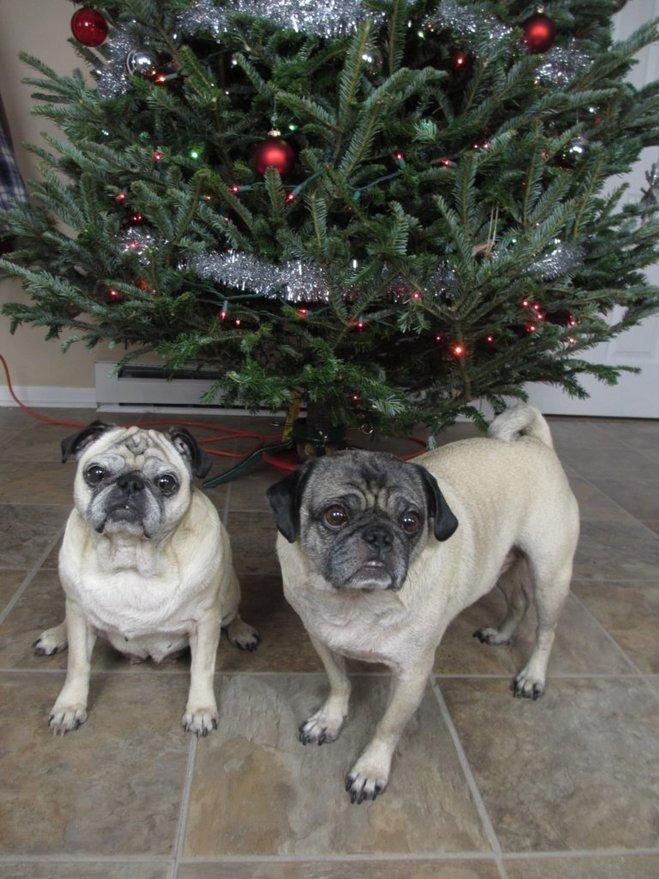
What respiratory infections affect pug breathing?
Like all dogs, pugs are prone to contagious pathogens like kennel cough, parainfluenza, and canine influenza which infect and inflame the respiratory tract. Their compact airways leave little room for swelling or secretions. Bacterial pneumonia, fungal pneumonia, and other lower airway infections can also develop, dangerously restricting oxygen flow. Antibiotics, rest, and supportive care treat most respiratory infections. Preventive vaccination helps reduce risk.
What are some emergency signs of respiratory distress in pugs that warrant an immediate vet visit?
Signs like pale/blue gums, collapse, loss of consciousness, inability to stand, or extreme lethargy require emergency veterinary treatment. These signal a pug is not getting adequate oxygen.
How can I monitor my pug’s breathing at home between vet visits?
Keep notes on respiratory rate at rest and exertion, watch for increased nasal discharge, use phone apps to record noisy breathing episodes, monitor gum color and capillary refill time.
Are home remedies like essential oils, herbal supplements, or hydrogen peroxide safe for pug breathing issues?
No, do not attempt to treat breathing issues at home without veterinary guidance. Many supplements can interact with medications. Herbal remedies and essential oils won’t resolve anatomical obstruction. Discuss any at-home treatment plans with your vet first.
Should I get pet insurance for my pug to help cover costs of breathing-related surgeries/medications?
Yes, pet insurance can significantly offset expenses from diagnostic testing, nose surgery, specialist consults, hospitalization, and long-term management of chronic respiratory disease. Compare plans while pugs are young and free of pre-existing conditions. A key factor when choosing pet insurance for pugs is to make sure the plan covers common ailments related to pugs. Some health insurance plans will say they do not cover expenses that are common within the breed, which for pugs could mean they would not cover breathing related vet visits or treatments.
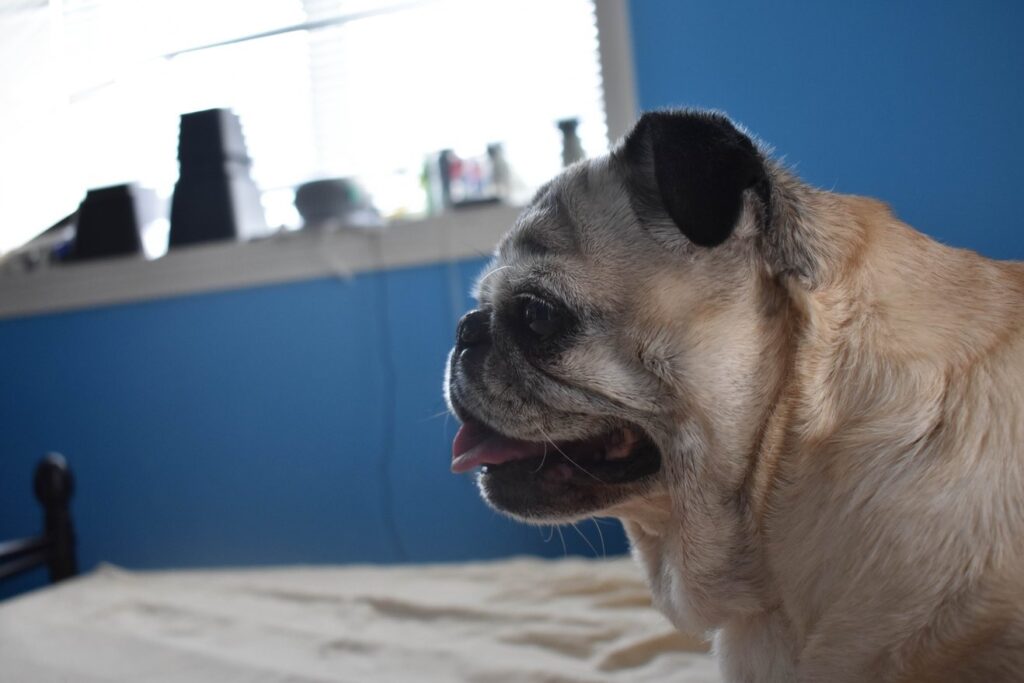
How can I make car travel safer and easier for a pug with breathing difficulties?
Use a secured crate, keep the cabin cool, give sedatives if prescribed, offer access to water, take frequent breaks, and avoid travel in extremely hot or cold weather. Driving anxieties and panting worsen respiratory distress.
Are there any signs of breathing trouble I should watch for at night while my pug is sleeping?
Watch for intermittent stops in breathing, pronounced abdominal effort, restlessness, wheezing noises, or sudden awakening seeming distressed. Also be concerned if your pug prefers to sleep sitting propped up. This suggests trouble breathing while lying down.
